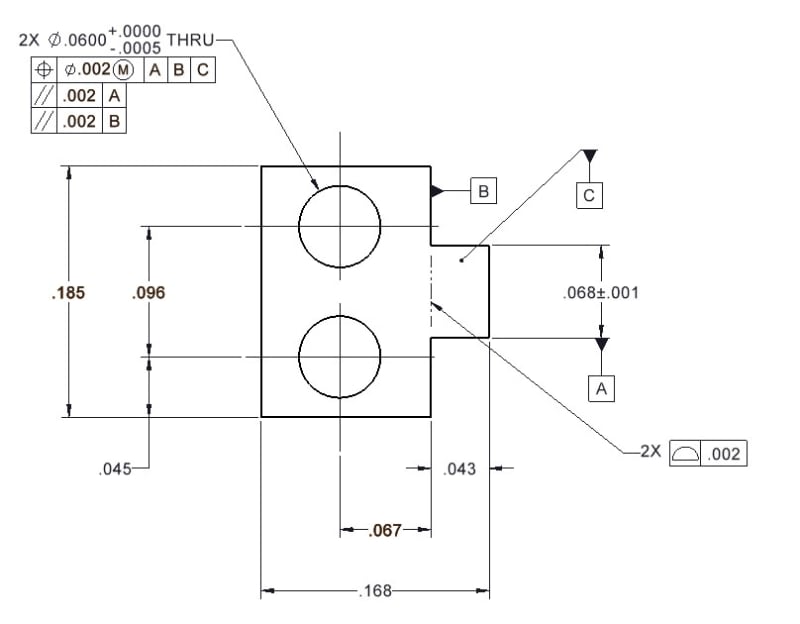Hi All,
I'm having trouble figuring out the best way to call out my design intent on the attached part. The two Ø.0600 holes need to be parallel to each other and parallel to both datums B and A. Is there a better way to call out my intent over the way I did it?
Thanks for your input.

I'm having trouble figuring out the best way to call out my design intent on the attached part. The two Ø.0600 holes need to be parallel to each other and parallel to both datums B and A. Is there a better way to call out my intent over the way I did it?
Thanks for your input.

